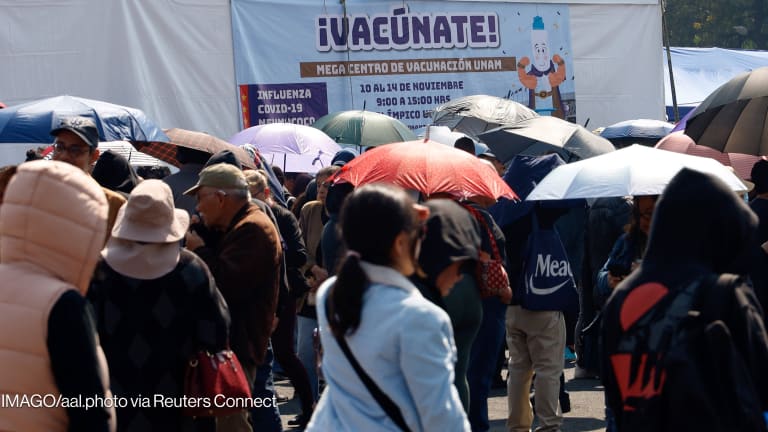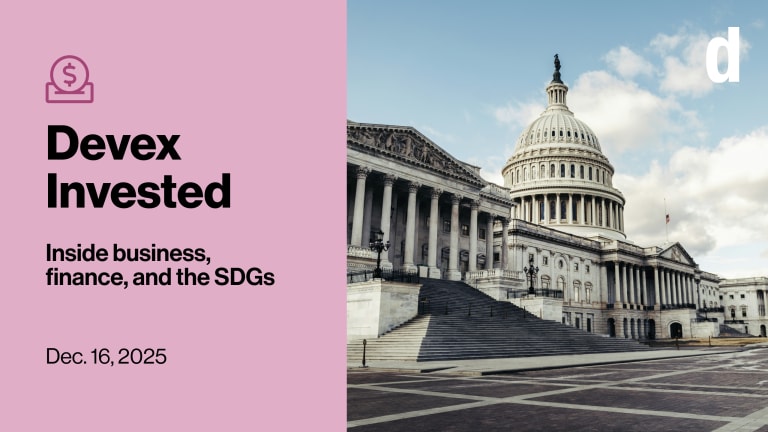How economic growth became a forgotten priority at USAID
And how USAID's outgoing administrator Samantha Power is pushing for that to change.
For decades, the U.S. Agency for International Development followed a well-worn path. Invest in the basics — such as education, health care, and agriculture — and assume liberalized markets would take care of the rest. At the start of the Biden administration, less than 5% of USAID’s budget was going toward core economic growth programming, explained the agency’s outgoing administrator, Samantha Power. And when she first took the helm of the multibillion-dollar agency, that lack of focus surprised her. “I had thought [core economic development work] would be really at the center of what USAID did around the world," Power said three and a half years later, speaking at an event hosted by the Council on Foreign Relations, a Washington, D.C.-based think tank, earlier this week. “When I travel around the world and meet with foreign leaders in the countries where USAID has partnerships, I hear again and again the same thing. … We want trade, not aid. We want to grow our economies. We do not want to be dependent, in any fashion, on foreign support.” Despite such calls for change, it’s easier said than done. USAID’s funding is more than 90% earmarked, Power explained, with the U.S. Congress channeling pots of money to specific initiatives within the USAID umbrella. As a result, the agency’s economic growth programming is funded by a “very, very small band of discretionary” funds, Power said — and this past year, such discretionary funding was at an all-time low. While that funding dropped, so too did the number of mission-based economists, sliding from 35 to nine in the last decade alone, according to the administrator. “Looking out at the demand signal we get from our partners, and the needs we know have arisen, we know that the approach we’ve been taking is insufficient,” said Power, speaking from the CFR stage. “From pandemics to natural disasters to conflict, but also to disruptions that we know are coming from AI. In light of all these shocks, we need to think differently.” Power explained how throughout her tenure at the agency, she tried to push those ambitions forward — highlighting the launch of USAID’s Economic Resilience Initiative, a $99-million program that focuses on stabilizing macroeconomic conditions, creating jobs and boosting wages, and connecting countries to critical supply chains. While the agency has not yet released information on that initiative, it seems to pull together programs from across the last several years: from the appointment of a new chief economist in 2022, to a continued effort to connect Angola, Zambia, and the Democratic Republic of Congo by rail via the Lobito corridor. Power described another example of that initiative in Ecuador, where USAID is helping government officials apply for up to $1.3 billion in concessional financing from the International Monetary Fund; and yet another in the Dominican Republic, where USAID and the U.S. Army Corps of Engineers are rehabilitating a port on the Caribbean Sea. Later this month, USAID will also release a new policy on economic growth and trade, one that will “crystallize years of effort and learning at our missions to better respond to rising debt, slowing growth and investment, and supply chain disruptions.” “I believe there is an urgent need for the U.S. government to do far more in these areas,” Power said. “As the U.S. seeks coalitions to prevail in an era of strategic competition and an era of interdependence, it will be key to respond to our partners’ needs, answering when they tell us that they need support to build their own resilience, sovereignty, and self-sufficiency.” A big reason for that shift, Power explained, was because of countries’ climbing debt. Today, 3.3 billion people are living in countries that spend more on debt servicing than they do on education or health, making sustained investment in such areas nearly impossible. Another reason is to offer an alternative to China’s version of development. More than 40 countries that USAID supports are sending more money to China through debt repayments than the Chinese government is sending through loans, the administrator said — adding that in low- and middle-income countries, China is issuing $9 of debt for every dollar of aid it provides. “When we talk about countering [China’s] influence and providing real options to low- and middle-income countries, this is what it looks like,” Power said. “When we talk about creating stability and security for U.S. businesses and workers, this is what it looks like.” Still, it’s not like this is a new space for the U.S. government. The U.S. International Development Finance Corporation, or DFC, has offered financial support to private sector projects in low- and middle-income countries since 2020, providing loans, equity investments, and technical assistance grants. In just four years, the DFC's investments have grown by nearly 80%, from $6.7 billion across 61 projects in 2020 to $12 billion across 181 projects in 2024. “The DFC has found a way to help a variety of private sector actors on the ground de-risk. They have brought their own capital to bear, they are making it easier for other private sector players from the United States and elsewhere to come and be involved,” Power said. There’s also the Millennium Challenge Corporation, which provides grants focused on economic growth and poverty reduction to countries that demonstrate good governance. Despite those efforts, Power still made the case for investing in USAID — stating that the agency’s 7,000-strong staff members are helping countries mobilize their own tax revenue, manage public finances, and reform procurement to ensure investments from the DFC or World Bank are more effective. “Congress and this town need to go all in on this approach, which is not only thinking in terms of economic growth, but helping reframe the conversation around economic resilience — theirs and ours,” she said.
For decades, the U.S. Agency for International Development followed a well-worn path. Invest in the basics — such as education, health care, and agriculture — and assume liberalized markets would take care of the rest. At the start of the Biden administration, less than 5% of USAID’s budget was going toward core economic growth programming, explained the agency’s outgoing administrator, Samantha Power. And when she first took the helm of the multibillion-dollar agency, that lack of focus surprised her.
“I had thought [core economic development work] would be really at the center of what USAID did around the world," Power said three and a half years later, speaking at an event hosted by the Council on Foreign Relations, a Washington, D.C.-based think tank, earlier this week. “When I travel around the world and meet with foreign leaders in the countries where USAID has partnerships, I hear again and again the same thing. … We want trade, not aid. We want to grow our economies. We do not want to be dependent, in any fashion, on foreign support.”
Despite such calls for change, it’s easier said than done. USAID’s funding is more than 90% earmarked, Power explained, with the U.S. Congress channeling pots of money to specific initiatives within the USAID umbrella. As a result, the agency’s economic growth programming is funded by a “very, very small band of discretionary” funds, Power said — and this past year, such discretionary funding was at an all-time low.
This story is forDevex Promembers
Unlock this story now with a 15-day free trial of Devex Pro.
With a Devex Pro subscription you'll get access to deeper analysis and exclusive insights from our reporters and analysts.
Start my free trialRequest a group subscription Printing articles to share with others is a breach of our terms and conditions and copyright policy. Please use the sharing options on the left side of the article. Devex Pro members may share up to 10 articles per month using the Pro share tool ( ).
Elissa Miolene reports on USAID and the U.S. government at Devex. She previously covered education at The San Jose Mercury News, and has written for outlets like The Wall Street Journal, San Francisco Chronicle, Washingtonian magazine, among others. Before shifting to journalism, Elissa led communications for humanitarian agencies in the United States, East Africa, and South Asia.








